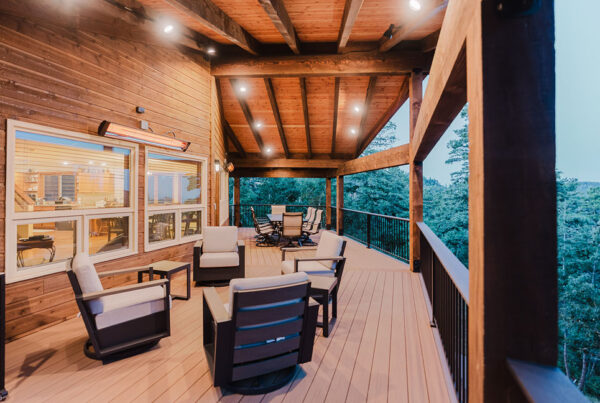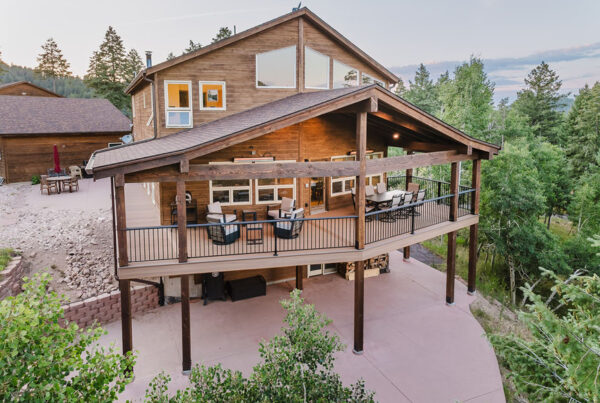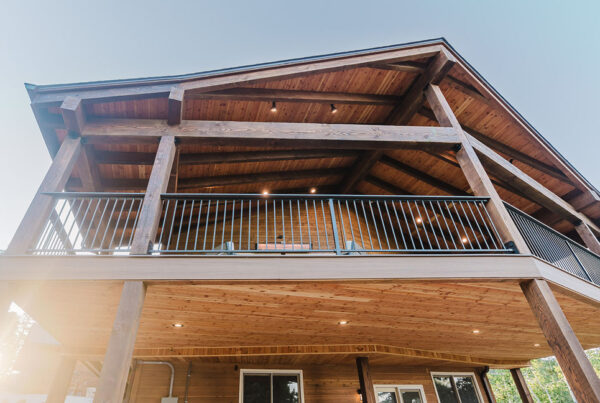Building a composite deck is a popular choice for homeowners who want a durable and low-maintenance outdoor living space. However, many people have questions about the process and considerations involved. In this blog, we address the top 5 frequently asked questions on building a composite deck.
What is a composite deck, and why should I choose it over wood?
A composite deck is made of a combination of wood fibers, recycled plastic, and binding agents. It offers several advantages over traditional wood decking, including:
- Durability: Composite materials are resistant to rot, moisture, and insect damage, resulting in a longer lifespan compared to wood.
- Low maintenance: Unlike wood, composite decking doesn’t require staining, sealing, or painting. Regular cleaning is usually sufficient to maintain its appearance.
- Sustainable choice: Composite decking incorporates recycled materials, making it an eco-friendly
option. - Enhanced aesthetics: Composite decking comes in a variety of colors and finishes, offering greater design flexibility.
How do I choose the right composite deck material?
When selecting a composite deck material, consider the following factors:
- Quality: Look for reputable brands with a track record of producing high-quality and long-lasting decking materials.
- Appearance: Determine the desired color, texture, and finish that align with your aesthetic preferences.
- Performance: Consider the material’s resistance to fading, scratching, and staining.
- Warranty: Ensure that the manufacturer provides a solid warranty, reflecting their confidence in the product’s durability.
What are the key steps involved in building a composite deck?
While it’s a good idea to consult local building codes and regulations specific to your area, the general steps for building a composite deck include:
- Design: Plan and create a deck layout, considering factors such as size, shape, levels, and any additional features like railing or lighting.
- Foundation and substructure: Prepare the ground, install footings, and construct the substructure using pressure-treated lumber or steel framing systems.
- Decking installation: Install the composite boards by securing them to the substructure using hidden fasteners or screws, depending on the specific product.
- Finishing touches: Add final touches like post caps, perimeter framing, and railings to complete the deck.
How do I maintain a composite deck?
To keep your composite deck looking great for years to come, follow these maintenance tips:
- Regular cleaning: Sweep or hose off debris and clean the deck surface with a gentle composite deck cleaner and a soft brush or sponge.
- Avoid harsh cleaning agents: Do not use bleach or abrasive cleaners as they can damage the surface.
- Address spills promptly: Wipe off any spills to prevent staining.
- Prevent scratches: Use mats or furniture pads under heavy objects and avoid dragging furniture across the deck.
- Inspect for damage: Periodically check for any signs of wear or damage, such as loose boards or mold growth, and address them promptly.
How does the cost of a composite deck compare to a wood deck?
While composite decking typically has a higher upfront cost compared to wood, it offers long-term savings due to its low maintenance requirements and durability. Wood decks may require regular staining or sealing, which incurs ongoing expenses. Additionally, composite decking’s longer lifespan can offset the initial higher investment.
Conclusion
Building a composite deck provides homeowners with a durable and low-maintenance outdoor space. By understanding key aspects like material selection, installation, maintenance, and cost comparisons, you can confidently embark on creating your dream composite deck. Remember to consult local building regulations and seek professional guidance when needed. Enjoy the process and the beautiful outdoor living space you’ll create!



